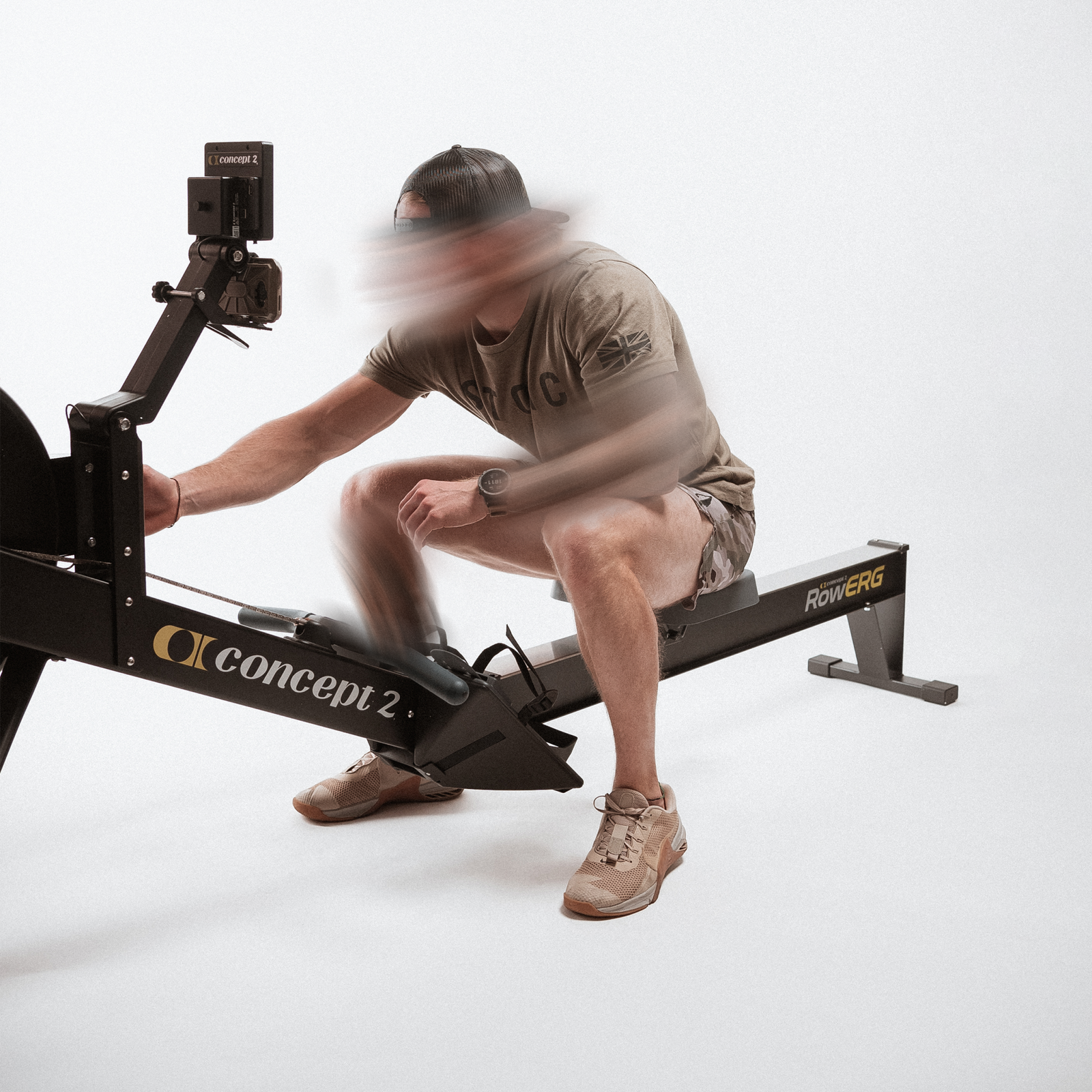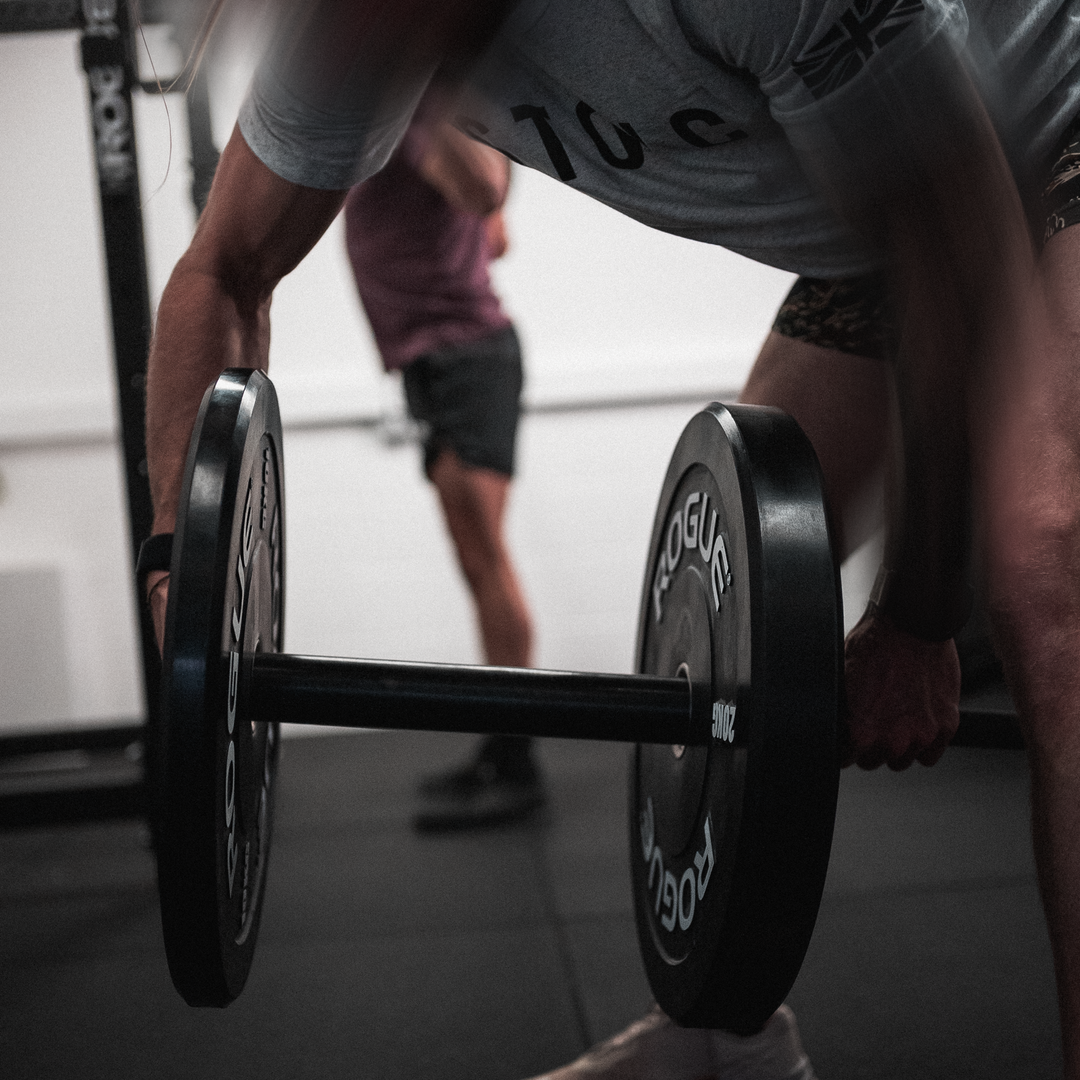HEART RATE TRAINING: HOW USING HEART RATE MONITORS WILL IMPROVE YOUR PERFORMANCE

For military personnel, cardiovascular training needs to be a crucial component of your own personal training programme, even outside of mandatory PT.
It not only improves your endurance, longevity, energy utilisation, recovery from strength training and overall aerobic capacity, but also helps you perform better in demanding situations, such as long patrols, on arduous training and selection courses, and being sleep deprived, and will also assist in improving your shooting accuracy.
However, not all cardiovascular training is created equal, and each person will respond differently to different types and intensities of exercise due to their individual needs.
This is where heart rate (HR) based training can help. By tracking your HR during training, you can get a better understanding of your body’s response to different levels of intensity rather than having to anecdotally guess, and then try to adjust your training accordingly.
This article will explore the science behind HR monitoring, the different HR training zones and how to calculate them, and how you can use this information to enhance your cardiovascular training, improve your performance and optimise your recovery.
The History and Science of Heart Rate Training
Heart rate training isn’t a new concept. In fact, the science of heart rate training has been under pretty consistent development for many decades. The first recorded use of heart rate to guide physical training dates back to the 1960s, when pioneering Finnish endurance athlete Dr Antti Sovijärvi began experimenting with HR monitors to fine-tune his training.
Since then, sports scientists and coaches alike have recognised the value of heart rate training. It provides a quantitative measure of exercise intensity that is personalised to the individual. This approach stands in contrast to using absolute measures such as running speed or lifting weight, which doesn’t account for individual fitness levels or day-to-day variations in performance.
The number of times your heart beats per minute (bpm) is referred to as your heart rate. Several factors influence it, including your age, gender, genetics, fitness level, and environmental conditions such as heat, humidity, and altitude.
Your heart rate will increase during exercise in response to the increased demand for oxygen and energy from your working muscles, as well as the clearance of byproducts and CO₂. As your body tries to keep up with the increased demand, your HR will rise as the intensity of the exercise increases.
However, the relationship between HR and exercise intensity is not always linear. Your HR may not increase significantly at low levels of intensity because your body can easily meet the demand with oxygen and energy from its reserves.
However, as the intensity gradually increases, your HR will rise to meet the demand until it reaches a plateau where it can no longer rise any further. This heart rate plateau is referred to as the maximum heart rate, or Max HR.
How to calculate your Maximum Heart Rate
Your Max HR is determined by your age, gender, and level of fitness. This is not set in stone and can be altered, with the best way being to improve your aerobic capacity and overall fitness.
Calculating Max HR Using Equations
You may have seen this most common but very rough method of calculating your Max HR before:
220 bpm minus your age [220 – age]
However, the above method can have a standard deviation of around +/- 12 BPM. A better calculation you can use that has a slightly more precise formula and adjusted for generally active people is:
211bpm – 0.64 x your age [211 – 0.64 x age]
Keep in mind that these formulas focus on the ‘theoretical’ maximum heart rate. The actual maximum heart rate that an athlete can reach will vary across different activities which is why it’s generally recommended to test your HR using the specific activity you’re training for.
Also noteworthy is that these commonly used formulas are not gender adjusted and generally women will have a 5-10 beat lower max HR than men.
Calculating Max HR Using Physical Testing
Of course, a far more accurate way to calculate your Max HR would be to run a laboratory-based test (VO₂ max test). This test determines not only your Max HR but also aerobic, anaerobic and lactate thresholds. All this data helps to analyse how your training is impacting your body and gives you accurate data to help adjust your training.
Whilst lab testing has its benefits, most of us don’t have the ability to find a lab near us and make use of VO₂ max testing. This is where field testing can help.
Now field testing your Max HR has its own drawbacks as well, and inexperienced athletes are far better off estimating their Max HR using the equations above and structuring the training process around those numbers. This is because people inexperienced with pushing themselves and maintaining a high level of discomfort and suffering, will quit or slow down long before they reach their true maximum capacity.
Here are two relatively quick protocols for a Max HR field test that you don’t need a lot of equipment for, just a heart rate monitor (preferably a chest strap version rather than a wrist-mounted version).
Make sure you’re performing these after a very extensive warm-up and go into them with the mindset that it’s going to hurt, but only for a short period of time.
Test 1: 10-minute incremental running test
| Stage | Time | RPE (1-10) | Exertion Level |
| 1 | 0-2 mins | 2-3 | Light |
| 2 | 2-4 mins | 4-6 | Somewhat Hard |
| 3 | 4-6 mins | 7-8 | Hard |
| 4 | 6-8 mins | 9 | Very Hard |
| 5 | 8-10 mins | 10 | Maximum Effort |
A regular incremental test that sees your pacing increase every 2 minutes. Make sure you’re at maximum effort going into the final round and take the highest recorded HR during that 5th increment.
Test 2: 4x2min test
| Round | Interval Time | Rest | Exertion Level |
| 1 | 2 mins | 1 min | Very Hard |
| 2 | 2 mins | 1 min | Maximum Effort |
| 3 | 2 mins | 1 min | Maximum Effort |
| 4 | 2 mins | 1 min | Maximum Effort |
This test is closer to a traditional VO2 max-type of training protocol. The idea is that you don’t let the body fully recover by having a rest interval shorter than the speed interval. Measure your peak HR in each of the intervals.
The difference in this test is that you’re focusing on reaching the maximum heart rate rather than just training it. Therefore, every interval should be performed at maximum speed and not the lactate threshold (Zone 4) speed.

Heart Rate Zones and Thresholds
Based on the relationship between heart rate and exercise intensity, we can divide exercise into different heart rate zones, each with a different purpose and effect on your body. The three simplified zones are:
Aerobic Zone:
This is the zone where your heart rate is between 60% and 80% of your maximum heart rate. In this zone, your body is able to meet the demand for oxygen and energy with oxygen from breathing and energy from fat and carbohydrates. This zone is ideal for improving your endurance, utilising fat at a fuel source more readily, and building a good foundation of conditioning.
Anaerobic Threshold Zone:
In this zone, your heart rate is between 80% and 90% of your maximum heart rate and is starting to rely more on energy from carbohydrates/glucose and less on oxygen/fat, as the demand for oxygen exceeds the supply. This zone is ideal for improving your lactate threshold, or the point at which your body starts to accumulate lactate and fatigue sets in.
VO2 Max Zone:
This is the zone where your heart rate is above 90% of your maximum heart rate. In this zone, your body is relying almost exclusively on energy from carbohydrates, and the demand for oxygen is maximal. This zone is ideal for improving your maximal oxygen uptake, or VO2 max, which is a measure of your body’s ability to use oxygen for energy.
A more in-depth breakdown of the heart rate zones and example heart rates for a 28 year old male athlete would look like this:
| Zone | Training Effect | Percentage Range | 28 Year-Old’s Rough HR Zones |
| Zone 1: Easy | Easy/Warm Up/Recovery | 50-60% | 95-115 bpm |
| Zone 2: Moderate | Aerobic Base | 60-70% | 115-135 bpm |
| Zone 3: Aerobic | Aerobic Endurance/ Threshold | 70-80% | 135-155 bpm |
| Zone 4: Threshold | Anaerobic Capacity | 80-90% | 155-175 bpm |
| Zone 5: Maximum | Speed Training | 90-100% | 175-195 bpm |
What are the benefits of heart rate based training for performance?
More individualised training
Everyone’s HR is unique and can be influenced by a number of factors as we’ve mentioned. HR tracking allows for deeper personalisation of training programs, meaning that two people performing the same activity with the same intention may have completely different training HR zones and therefore will need different pacing.
For example, take 2 athletes who are the same age but athlete 1 is 80kgs, with high cardiovascular fitness due to a background in running and athlete 2 is 95kgs with a strength background.
| Athlete | Weight | Max HR | Zone 2 Range | Conditioning/Strength Levels | Approximate Running Pace to Stay in Zone 2 |
| 1) 28 years old | 80kgs | 193 | 116-135 | High/Moderate | 7:00 – 7:30 min/km |
| 2) 28 years old | 95kgs | 193 | 116-135 | Low/High | 9:00 – 10:00 min/km |
The training sessions to improve their aerobic capacity will need to be done at far different paces for them both to benefit from the training stimulus. If they go out and train together subjectively then either Athlete 1 will potentially end up sitting in Zone 1 or Athlete 2 will sit in Zone 3/4.
Using an HR monitor ensures that each individual’s training program is tailored to their specific needs and capabilities, speeding up their results.
Improving your performance faster
Monitoring your HR allows for targeted and efficient training sessions. By identifying the exact HR zone that corresponds to different adaptations, you can ensure you are training at the right level for session goals, whether it be improving endurance, increasing speed, or promoting recovery. This can also help avoid junk miles and guesswork when it comes to improving specific metrics.
Slowing your pace down
As we saw in the example above, using an HR monitor can help you objectively manage your pace without having to guess where your HR is sitting in your training session.
Objective progress reports
Regular HR monitoring can show you the trend of your fitness progress. As your fitness levels improve, your heart will become more efficient – leading to a lower resting HR and a quicker recovery HR. Tracking these changes can also provide a motivational boost as you’ll be able to see tangible evidence of their improvement.
Potentially reduced the risk of injury
By monitoring your HR and being able to better control your training intensity, you can avoid overtraining, which can lead to injuries and long-term setbacks in your progression. Consistent HR tracking can potentially help in detecting early signs of fatigue, stress, or illness, which may then allow you to rest and recover before it becomes a more serious issue (but this isn’t always a clear picture or easy to estimate).
Improvement in strength training
Training at this intensity can enhance the body’s ability to recover from intense bouts of strength training by promoting blood flow and nutrient delivery to the muscles, helping to facilitate repair and growth as well as just being able to tolerate more training volume in general.
Management of stress
Heart rate variability, which is the measure of the variation in time between each heartbeat, is also an important metric that can be monitored. High heart rate variability is generally linked to good health and resilience to stress. Regular monitoring of heart rate variability can provide insights into how an individual’s body is responding to training loads, stress, and recovery, which can guide the adjustment of training plans to optimise performance and health.
While there are a lot of wrist-based HRV trackers out there that are great and can offer even more metrics for you to track, don’t be too suckered into the marketing hype that it gives you perfect feedback all the time and that you should take the advice of the wearable as gospel. Learn to value your introspective assessment as well as the feedback from the HRV device.
HR tracking methods – Chest Straps vs Wrist Monitors
There are two main types of heart rate monitors you can use: chest straps and wrist monitors. Each has its own pros and cons.
Chest straps are more accurate than wrist-mounted devices as they capture the electrical activity of the heart directly. However, they can sometimes be uncomfortable to wear for long periods of time, and some people find them inconvenient because they require contact with the skin to work properly or may be dislodged during activities.
Wrist monitors are more comfortable and convenient. They use optical sensors to detect changes in blood flow, but they are less accurate, particularly during intense activity, strength training sessions or if the device isn’t fitted properly.
We recommend opting for a chest strap-based HR monitor due to its higher accuracy and smaller standard deviation of results.
Conclusion
We use HR zones in our training plans as part of the coaching intentions that help guide you in your pacing and intensity during training sessions. Like anything, HR monitors are a tool that you can use to help improve your performance and something that can be eye-opening in terms of how you ‘feel’ during training sessions and how your heart is performing.
You can still use a talk test or breathing method (nasal or mouth biased and speed) to help throttle your training sessions and it’s good practice to utilise and be familiar with all three methods so you can use them easily during different training styles such as running on a treadmill (easy to use HR monitor), working through a long metcon (easier to use breathing method), or trail/hill running whilst carrying loaded (HR monitor, talk test or breathing can be used to preference).
References
Mann, T., Lamberts, R. P., & Lambert, M. I. (2019). Heart rate variability in elite Nordic skiers and standstill period effects. Journal of Sports Sciences
Buscà, B., Moreno, M., Peña, J., Salas, C., Sampaio, J., & Anguera, M. T. (2018). Heart rate monitoring in basketball: Applications, challenges, and future directions. Frontiers in Physiology,
Hoyt, R. W., & Buller, M. J. (2019). Heart rate variability in military science. Military Medicine
Liew, B. X. W., Morris, T. C., Malliaras, P., & Barton, C. J. (2016). Heart rate-based training intensity and its impact on injury incidence among military recruits. Military Medicine,
Knapik, J. J., Canham-Chervak, M., Hoedebecke, E., & Ausen, T. L. (2017). Heart rate monitoring during military operational tasks: A systematic review. Journal of Science and Medicine in Sport
Galy, O., Manouvrier, C., Boucard, G., & Ahmaidi, S. (2015). Heart rate monitoring: A new method for assessing military personnel’s physical workload during field exercises. Journal of Strength and Conditioning Research





